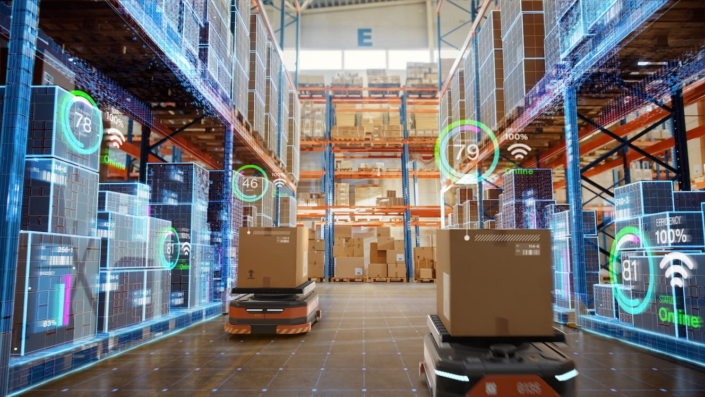Customer service in logistics, shipping, and ecommerce is more demanding than ever.
Customers expect real-time updates, fast resolutions, and seamless experiences—and they won’t hesitate to switch providers if they don’t get them.
But meeting these expectations at scale can be overwhelming. Between tracking inquiries, shipment delays, and damage claims, customer service teams often struggle to keep up. That’s where AI-driven customer service tools come in, helping businesses provide faster, smarter, and more proactive support.
“Most AI tools today are plug-and-play, making them easier and more affordable to roll out than ever before.” – Henrik Bergsager
This blog is part of a series that dives into four major ways AI can transform your shipping strategy:
- Improving time-in-transit predictions (Read it here)
- Transforming the customer experience
- Eliminating inefficiencies in the warehouse (Read it here)
- Optimizing last-mile delivery (Read it here)
AI-powered chatbots for 24/7 support
Customers don’t want to wait on hold for simple questions like “Where is my package?” or “When will my order arrive?” AI chatbots can handle these common inquiries instantly, providing tracking updates, estimated delivery times, and shipping policies—all without requiring a live agent.
More advanced AI-driven chatbots go beyond basic responses.
They analyze customer intent, access order data, and offer personalized recommendations. If an issue requires human intervention, they can escalate it to the right agent while retaining context, saving time and reducing customer frustration.
Proactive issue resolution with AI monitoring
Instead of waiting for customers to reach out about a delayed shipment, AI can predict delays in advance and notify customers proactively. AI-powered systems monitor traffic conditions, weather disruptions, and carrier performance in real time. If a shipment is likely to arrive late, AI can trigger an automated message explaining the situation and offering alternatives like rerouting or refunds.
This level of proactive communication reduces inbound complaints and increases customer satisfaction by managing expectations before frustration sets in.
AI-driven sentiment analysis for smarter responses
AI doesn’t just read messages—it understands customer sentiment. By analyzing customer emails, chat messages, and social media interactions, AI can detect frustration, urgency, or satisfaction levels and adjust responses accordingly.
For example, if a customer sends an email expressing frustration over a lost package, AI can flag the message as high priority and route it to a senior agent with a suggested empathetic response.
On the other hand, satisfied customers might receive automated thank-you messages and future shipping discounts, turning them into loyal advocates.
AI-optimized support ticket prioritization
Not all customer issues are equal—some require immediate attention, while others can wait. AI can analyze incoming support requests and prioritize them based on urgency, complexity, and business impact.
For instance:
- A VIP customer with a high-value shipment delay? AI moves their case to the top of the queue.
- A routine tracking inquiry? AI handles it automatically via chatbot.
This intelligent sorting allows customer service teams to focus their time on high-impact issues, improving efficiency while ensuring that the most critical problems get resolved first.
AI for personalized customer interactions
AI can learn from past interactions to personalize future customer interactions. If a frequent customer prefers email over phone support or always asks about specific delivery options, AI can tailor responses to match their preferences, creating a more seamless and engaging experience.
In ecommerce, AI can also recommend shipping options based on past behavior. If a customer regularly chooses expedited shipping, AI might suggest a membership for discounted express deliveries, improving both customer satisfaction and revenue.
Follow along for more ways AI is transforming logistics
While AI customer service tools are great for proactively resolving issues, it’s important to remember that an excellent customer experience starts with seamless operations behind the scenes.
From order fulfillment to inventory management, warehouses play a critical role in meeting customer expectations. AI is revolutionizing warehouse efficiency by optimizing workflows, reducing errors, and preventing costly disruptions.
To learn how AI boosts warehouse efficiency, keep an eye out for our next article: The Power of AI To Eliminate Inefficiencies in the Warehouse.
Meet EasyPost Luma
AI is reshaping logistics, and EasyPost Luma is at the forefront of this transformation. Built to empower retailers, brands, and ecommerce businesses, Luma leverages artificial intelligence to optimize every stage of shipping—from carrier selection to real-time transit insights—so businesses can reduce costs, improve efficiency, and enhance customer satisfaction.


